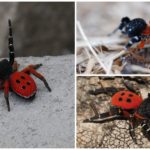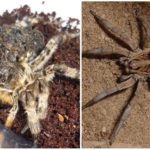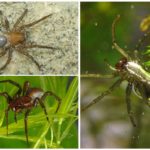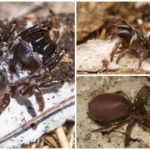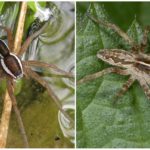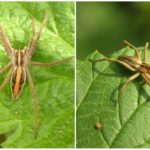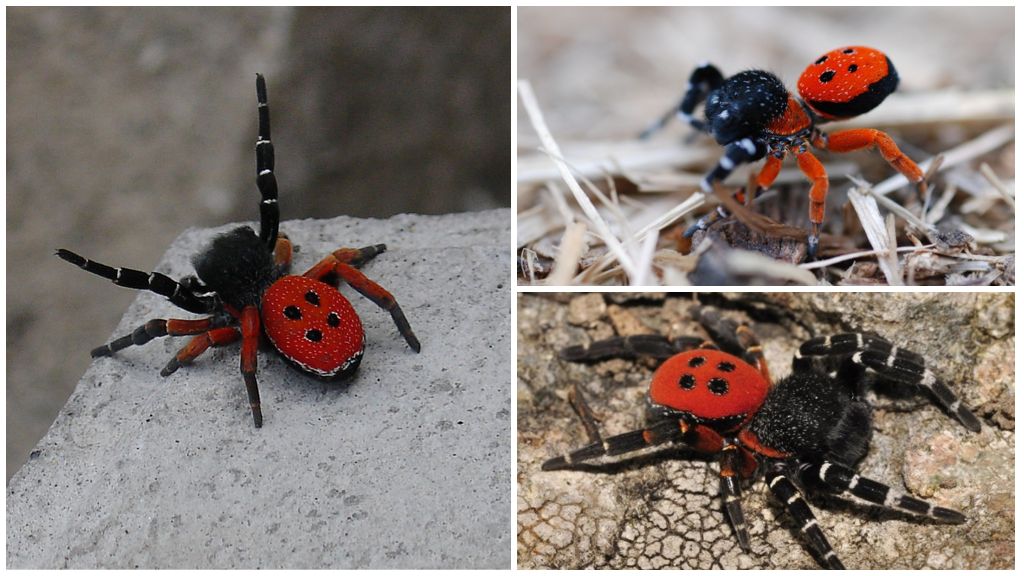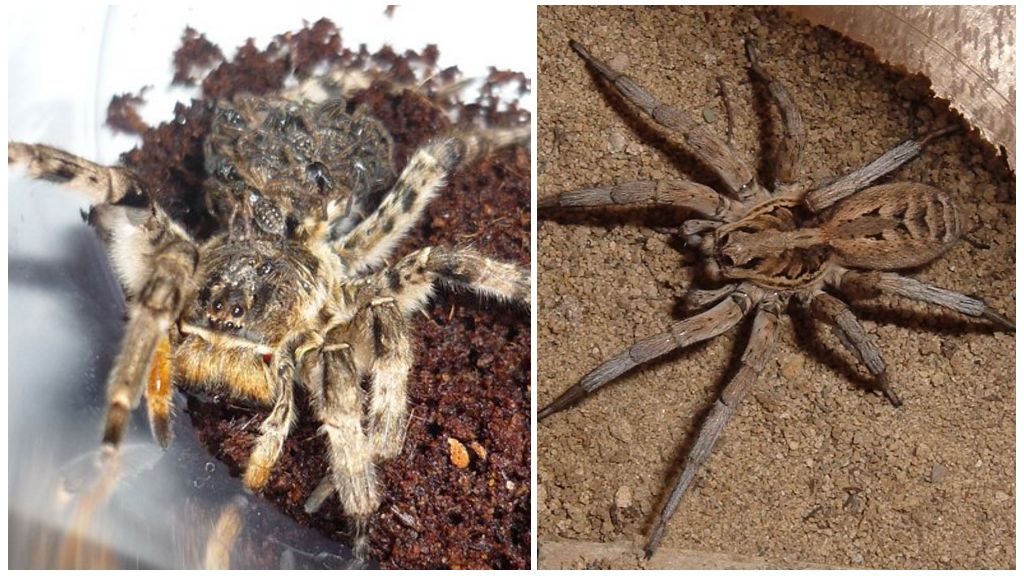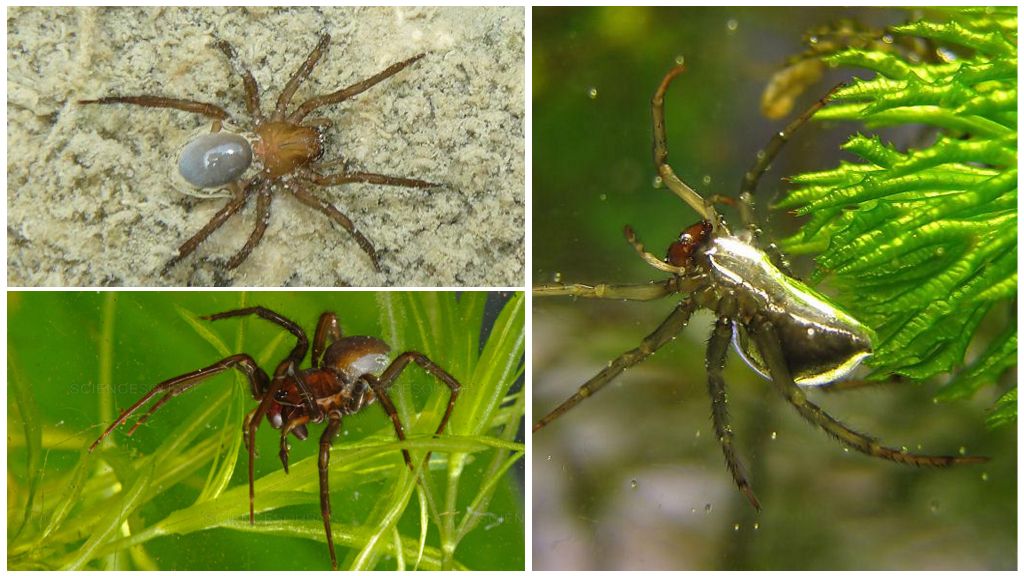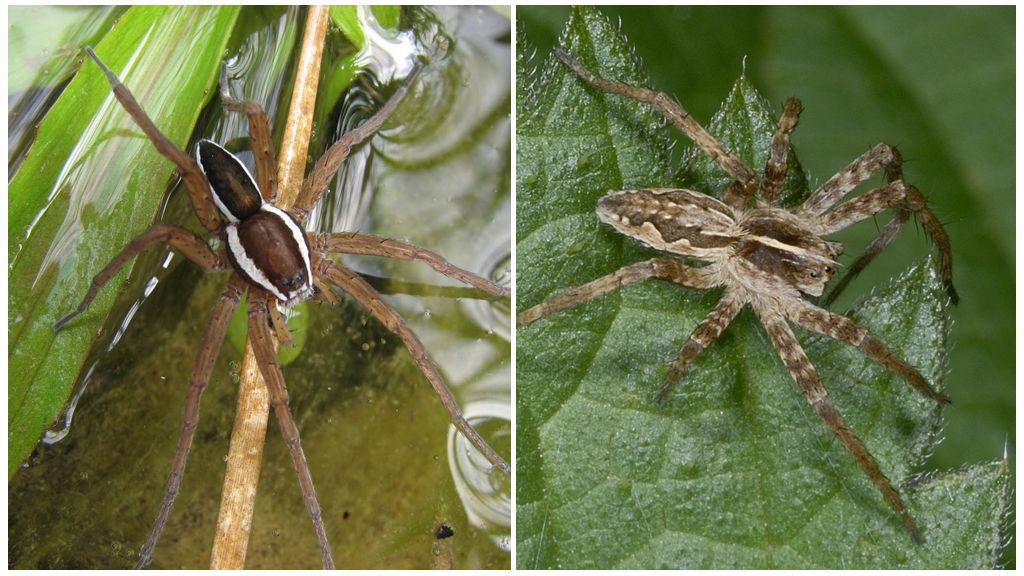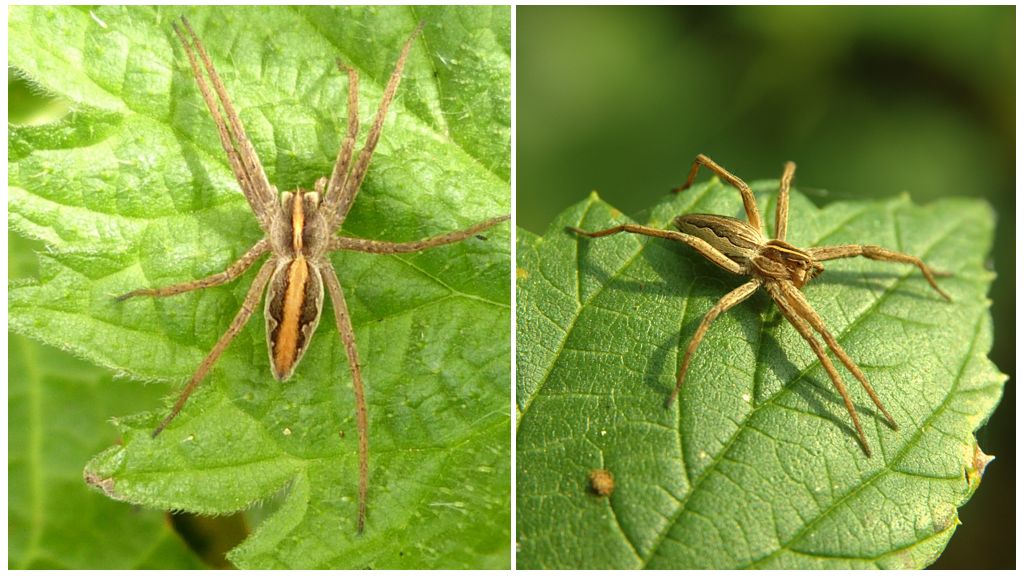Description and photos of the spiders of the Saratov region
Content
- Black surgeon
- South Russian tarantula
- Silver Spider
- Wall atypus
- Hunter striped
- Pisura amazing
Spiders of the Saratov region do not differ in principle from the inhabitants of the neighboring territories. Small invertebrate inhabitants of the region are studied quite well. In total, there are 400 species of arthropods in the fauna of this region. The Saratov region is distinguished by the fact that 5 spider species are listed in its Red Book at once.Some of them are poisonous, others are completely harmless, although they look daunting.
Red Book Spiders
Among the arthropods listed in the local Red Book are both poisonous spiders of the Saratov region and completely harmless creatures. There are no really dangerous spiders among the poisonous ones. There are able to deliver a lot of discomfort.
Spider species protected in the Saratov region include:
- black HRP or black fathead;
- South Russian tarantula;
- silver spider;
- atypus wall;
- hunter plant / striped.
The first two species can be dangerous to humans. But in the Saratov region, they are under state protection. Since it is impossible to offend these animals (they already survive with difficulty) and it is better to bypass it, it’s necessary to describe them with names and photos. So that you can find out when going on nature.
Two poisonous species: erezus and tarantula. Both are conditionally poisonous. To bite their bite does not lead. The most dangerous of these two is the erezus, since its poison leads to more serious consequences.
Black Eresus (Eresus kollari)
Erezus is called the velvet spiders for the thick short bristles covering the body.Because of this, the spider seems velvety.
For the area, erezusy are one of the largest spiders: the length of the female body is up to 2 cm, the male is 1 cm. The head and bosom of the abdomen in both sexes are approximately equal in size. At Erezus strict sexual dimorphism in color: the female is always black. The male has a bright red color of the abdomen with four black dots. Points are located at the corners of the square.
Interesting!
Because of the color of the abdomen in the male, the folk name for Erezus is the spider-ladybug.
Erezusy live in burrows 10 cm deep. Above the hole, spiders weave a canopy, connected to a living pipe. Erezus themselves usually do not dig holes, they occupy the dwellings of other invertebrates (crickets, ground beetles, and others), which serve as prey for these spiders. Can build homes in cracks and voids under the stones.
Erezus hunt for fast large bugs, other arachnids and other invertebrates using a spider canopy. Females, settling in one place, never leave the shelter. Burrows leave only young and mature males in search of a pair. Eresus females reach maturity in the third year of life. They lay only one cocoon in their lives, after which they die.Young spiders and immature females go for wintering.
South Russian tarantula
The largest representative of the Saratov spiders. Lycosa singoriensis belongs to the family of wolf spiders, not weaving a web and hunting at night. Southern Russian tarantulas are found in dry climates, preferring steppe and semi-desert zones. In the Saratov region is also listed in the Red Book because of the small number of suitable habitat for this spider.
Tarantulas independently dig deep holes in which trap loot. They have no special shelters for posterity. The female after laying eggs wraps them in a cocoon and carries with them. After the appearance of the spider, it carries offspring on the abdomen.
They hunt small invertebrates: crickets, beetles, centipedes. During the hunt or, defending themselves, they can jump to a height of 10-15 cm.
On a note!
The wasp and tarantula bites are approximately equal in intensity of pain and sequela. After a few hours, the tarantula bite marks disappear.
Silver Spider (Argyroneta aquatica)
The species is widely distributed in Europe, but in the Saratov region is listed in the Red Book. Differs in the presence on the abdomen of many short bristles, smeared with a special substance.Thanks to this adaptation the spider can spend a long time under water. Lubricated bristles do not get wet, and air is trapped between them. Under the water, silverfish breathe thanks to this air bubble.
Interesting!
Serebryanka - one of the few species of spiders, in which the male is larger than the female. The size of the male save him from cannibalism. Another atypical feature for spiders: the male and the female live together in the same refuge.
Outwardly, these are medium-sized spiders: the male is 1.5 cm, the female is 1.2 cm. The head of the chest is brown, almost naked. The abdomen is covered with thick bristles.
Spiders live in stagnant or low-flowing water. Bell-shaped nests are also built under water. After the nest is built, the silverfish fills it with air and uses it as a refuge. It feeds on small aquatic animals that it catches under water.
The silver spider has a rather strong poison, but is less poisonous than a tarantula.
Serious and relatively poisonous spiders in Saratov end. The rest of the red-book inhabitants of the steppes and sandy slopes, protected by law, are not afraid of man.
Wall atypus (Atypus muralis)
Relic of the Tertiary Period.In total, only 4 species of these spiders belonging to the first genus have been recorded in Russia. In the world there are 52 species of 3 genera. In the Saratov region dwells only atipus wall. The habitat of this spider is limited to the Sokolimi and Zhiguli mountains, as well as the Krasnosmarsky forest area.
Refers to the excavator spiders, self-digging their burrows. Spiders are usually of medium size: 0.8-1.2 cm. Females can grow up to 2 cm. Atipus black color. The internal structure is primitive: they have no trachea, they breathe with the help of a pair of lung sacs.
On a note!
Outwardly, the atypus seems to be a dangerous spider due to the large long chelicera, directed parallel to the ground. In fact, this device he needs because of the original way of hunting insects.
Atipuses dig burrows up to 90 cm deep, which are lined with spiderwebs from the inside. This fabric extends from the outside and looks like a long tube with a closed end. Usually the spider hides the tube under the vegetation.
Atypus females never leave these tubes. A spider approaching a tube of insects kills right through the fabric. After that, gnaws a hole at the end of the tube and goes outside to pick up the prey.
The males during the breeding season penetrate the shelter of the female, tearing the tissue of the tube. Eggs ripen 8-9 months. The life of these spiders is 7-8 years. The female becomes sexual mature only in 4 years.
These spiders live in colonies of dozens of individuals. Burrows are located at a distance of 0.5-2 m from each other. For colonies, they prefer to choose sandy soils on steppe-shaped sunny slopes or glades of pine-deciduous and pine forests.
Hunter striped
In the Saratov region, 4 species of the family Pisauridae were found - hunter spiders belonging to 2 genera: Dolomedes and Pisaura. But only one of them is listed in the Red Book of the Saratov region. This is a hunter striped.
The name “plant” in this case is incorrect and is tracing from the Latin name of the species Dolomedes plantarius. Plantae in Latin "plant".
Females of the striped hunter grow to 2 cm. Males average 11 mm. According to the description and appearance, the striped hunter is very similar to its “kinsman” - Dolomedes fimbriatus, whose name in the Russian systematics is limbic. Both species live in the same area and are easily confused.
Striped and limb hunters are distinguished by the width of a light band running along the entire body. Stripes begin from the cephalothorax and close at the end of the abdomen.The striped border on the cephalothora is wider than on the belly.
The color is brown. Abdomen oval. The legs are thick, long, equipped with large spikes.
Interesting!
These spiders can run for a while on the surface of the water.
Striped hunters live near reservoirs. In the same place catch prey, trapping it on a water edge. Females become sexually mature at 2 years. They breed twice a year. At one time, the female lays 500-600 eggs.
Pisura amazing (Pisaura mirabilis)
There is no established Russian name. Belongs to hunter spiders. Females of the pizayura are surprisingly up to 15 mm long, males - up to 13 mm. It lives in the grass and on the bushes. Spider hunts in the afternoon. Color greenish gray or gray-brown. On the sides of the abdomen are pale bands. A narrow light band runs along the dorsal scute of the cephalothorax.
Interesting!
This species has an interesting marriage ceremony. The male before copulation presents a cocoon to the female with a wrapped insect. The lighter shade of a cocoon, the more it is valued by the female. Males who have not made a present have 50% less chance of copulation.
But not all males at the right time is a successful hunt. Therefore, sometimes the spider presents an inedible cocoon to the female. The female will know about it already in the process of copulation.

